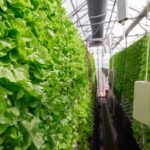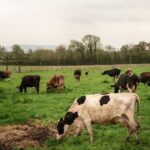Mixed farming is gaining momentum among Northern Cape farmers as a practical and profitable approach to agriculture. By combining crop production and livestock farming on the same piece of land, small and medium-scale farmers can increase their income, reduce risk, and make better use of available resources. In a region known for its arid conditions and unpredictable weather, mixed farming offers a resilient and adaptable way to improve productivity and sustainability.
The Northern Cape’s climate, while challenging, provides opportunities for integrating drought-resistant crops like maize, sorghum, and beans with hardy livestock such as sheep, goats, and cattle. This combination not only diversifies income streams but also makes better use of land throughout the year. For instance, after harvesting cereal crops, farmers can allow livestock to graze on crop residues, reducing feed costs and recycling nutrients back into the soil.
One of the key advantages of mixed farming is its ability to spread financial risk. When crop yields are low due to drought or pests, livestock can still provide income through meat, milk, or wool. Similarly, if livestock prices fall, a successful crop harvest can balance the farm’s income. This stability is particularly valuable in the Northern Cape, where climatic extremes can disrupt single-focus farming operations.
Mixed farming also improves resource efficiency. Livestock manure enriches the soil, reducing the need for chemical fertilizers and boosting crop yields. In turn, crop residues can be used as livestock feed, creating a circular system that minimizes waste and cuts input costs. Many farmers in the region also use rotational grazing and crop rotation to maintain soil health, reduce disease, and improve long-term fertility.
Labour and infrastructure can also be shared across farming activities, leading to cost savings. A single storage shed might serve both harvested crops and animal feed, while water systems and fencing can be designed to accommodate both purposes. This integrated approach allows small-scale farmers to achieve more with limited capital, making farming more accessible and sustainable.
To succeed with mixed farming in the Northern Cape, farmers should plan carefully and manage both components with equal attention. It’s important to choose crop and livestock combinations that suit the local climate and soil conditions. Farmers should also adopt record-keeping practices to track inputs, outputs, and profitability. Seeking guidance from agricultural extension officers and learning from experienced farmers in the community can go a long way in avoiding common mistakes.
Government programs and local cooperatives offer support in the form of training, inputs, and access to markets. By tapping into these resources, farmers can scale their mixed farming operations more effectively and increase their chances of long-term success.
Maximizing profits with mixed farming in the Northern Cape is not just about diversifying activities; it’s about creating a balanced, efficient, and resilient farming system. With thoughtful planning and consistent effort, small and emerging farmers can turn this approach into a powerful tool for food security and economic growth in the province.
Join 'Farmers Mag' WhatsApp Channel
Get the latest Farming news and tips delivered straight to your WhatsApp
CLICK HERE TO JOIN






